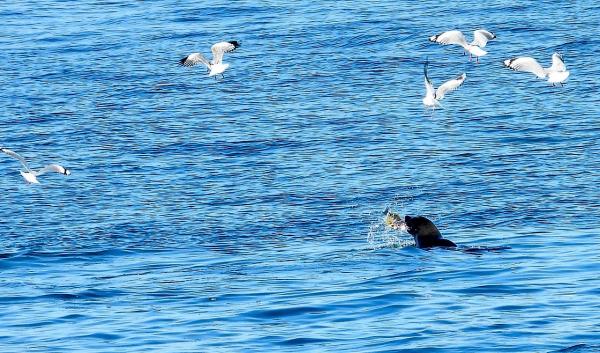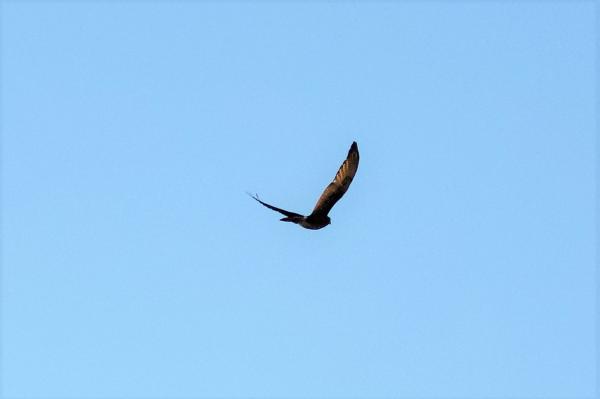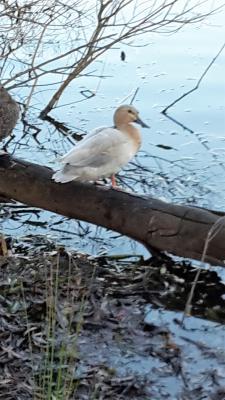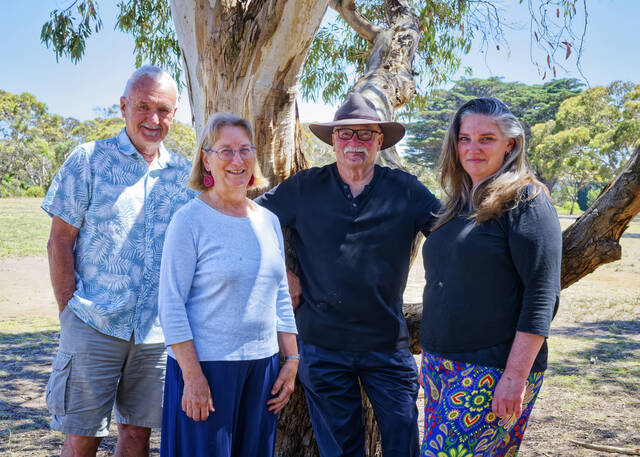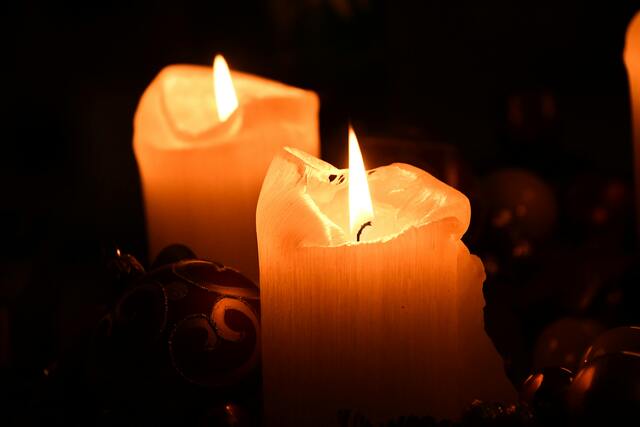The past few weeks have been lovely, with rain, cold mornings, and some beautiful sunny afternoons – perfect weather for exploring the Bellarine – if only we could.
The days are certainly getting slightly longer and milder, which is a sign that spring will not be far away.
Most of my birdwatching has been conducted on my way to work. One afternoon shift I stopped off at Rice Reserve near Connewarre to try and photograph the 10 or so flame robins that were hanging around on the grassy area.
A few days later I went back for the same purpose and there was not a flame robin to be seen, and I assume that the slightly milder weather has enticed them back to forests and woodlands, and even back to Tasmania, where they breed.
On my way to Rice Reserve I have been stopping at Breamlea Nature Reserve to check out the swan family with the six cygnets.
The young birds are thriving and starting to develop black feather plumage.
The other incredible sight was a few days ago, when I drove home from work via Curlewis. A farmer was ploughing a field and up to 30 black kites were circling around the tractor, looking for an early dinner. There were a few whistling kites amongst the black kites. If a raptor a day keeps the doctor away, I will be fine for the next month.
Black kites prey on lizards, small mammals and insects, especially grasshoppers that are disturbed during the ploughing process. I worry when I go to Curlewis that the farms will soon be turned into a big housing estate, so I treasure every bird I see there.
By far the best bird sighting I experienced over the past few weeks was about 50 yellow-tailed black cockatoos flying over my head while I was walking on the west track of the Ocean Grove Nature Reserve. I just love the black cockatoos’ calls and enthusiasm and joyfulness, and find them really uplifting in these uncertain times.
I have received some lovely emails from Voice readers over the past few weeks. On the subject of the wonderful Ocean Grove Nature Reserve, Kevin sent me an image of a crested-shrike tit that he spotted in the North Track. According to Craig Morley from the Geelong Field Naturalists Club, the crested-shrike tit record is “important and, judging from the black throat in your photo, an adult male. Only other recent record in eBird is March 2017. Prior to that 1989-1990 (three records) and prior to that 1971-1975 (three records)”.
I also received an email from Stephen, who spotted an unusual-looking Australian magpie on Barwon Heads Road in Warralily. This magpie has an abnormal plumage or leucism, which is a condition caused by a genetic mutation that prevents pigment, particularly melanin, from being properly deposited on a bird’s feathers. Birds with leucism do not have the normal, classic plumage colours listed in field guides or seen in most photos. Instead, the plumage may have several colour changes.
I then received an email from Karen from Ocean Grove, who dug up a few small trees in her garden to replace with natives and fruit trees to attract more bird life, and found that a pair of spotted pardalotes were attracted to the root system.
Karen was unsure whether she had disturbed their home, as spotted pardalotes construct a nest in the ground or in tree hollows. These tiny birds are beautiful, colourful creatures to have in a garden, and we are so lucky in Ocean Grove with the birds that we can see around here in our backyards.
I’ve heard from Carole, who has been keeping an eye on the flock of hooded plovers who have been hanging around the beach between Collendina and Point Lonsdale over the winter. Carole is going to volunteer to help protect the nesting plovers in the breeding season, which is great.
My last email was from another Carole, from St Leonards, who spotted a fur seal eating a fish, surrounded by the ever-present silver gulls who were also fishing in the same area.
Thanks to everyone for the interest in the nature of the Bellarine.

